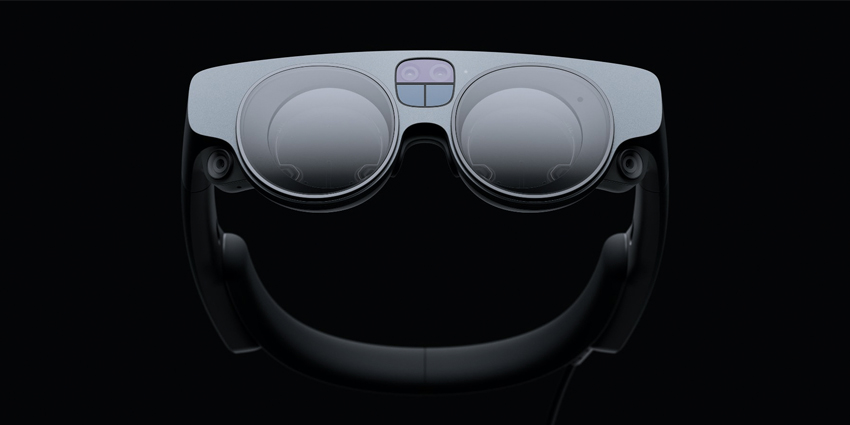Last week, at the SPIE Photonics West 2022 conference on optics and photonics research, Kevin Curtis, VP of Optical Engineering for Magic Leap revealed key details about the company’s upcoming mixed reality (MR) headset.
18 cameras in new Magic Leap 2! @magicleap presenting by Kevin Curtis, VP of Optical Engineering pic.twitter.com/QIEh843gX8
— Nataliya Kosmyna, Ph.D (@nataliyakosmyna) January 24, 2022
During the event, Curtis outlined various details about the Magic Leap 2 that suggest a massive jump in quality compared to the firm’s previous model.
The MR headset manufacturer is designing the Magic Leap 2 as an enterprise-grade device, although the firm has not confirmed or denied plans to release a consumer-grade model.
Upcoming Features
According to reports, Magic Leap announced that its upcoming headset will be a tethered device, meaning that users have to physically connect the Magic Leap 2 to a secondary computing “box” to offload processing power and improve battery performance.
Curtis claims the latest computing box is twice as powerful when compared to previous ones used in the Magic Leap 1 headset, although tech firms such as Nreal, Meta, and others are developing more standalone head-mounted devices.
In December 2021, Magic Leap revealed that it would partner with AMD to supply a powerful graphics processing unit (GPU) for the offboard computing device used in the Magic Leap 2 device. Previously, the first Magic Leap headset used an NVIDIA Tegra chip.
Also, the headset delivers massive upgrades in regards to its lens and MR visuals. The Magic Leap 2 will contain an eyebox — the horizontal and vertical distance from the lens to the eyes — that is twice as large as the original headset, allowing it to support various focal lengths with ease.
Additionally, the headset will contain 18 built-in cameras and sensors to enhance real-world tracking.
Curtis also unveiled a new feature called Dynamic Dimming (DD), which enables users to display MR overlays in a dark room or outdoor environment, without visual errors.
Apple has developed similar technologies for its upcoming device, namely after it secured a patent for an advanced augmented reality (AR) display that improves the tracking and rendering quality of augmented overlays when in low light environments.
Curtis concluded the Magic Leap 2 will also introduce a second embedded eye-tracking device to enhance visual quality and decrease render errors.
Announcements from CEO, Peggy Johnson
The news comes after Peggy Johnson, Chief Executive of Magic Leap, discussed updates on the Magic Leap 2 headset in an interview with CNBC News.
Johnson revealed new features such as the upcoming device’s powerful MR heads-up display (HUD) as well as its’ field of view, which she claimed was “the largest [in] the industry”.
Ahead of the interview, Magic Leap announced it had secured roughly $500 million in funding, raising the company’s total valuation to $2 billion USD, down from previous estimates of $3 billion.
Additionally, the interview revealed the Magic Leap 2 would launch in 2022 ahead of Microsoft’s HoloLens 3, with select customers acquiring the headset via an early access programme.







